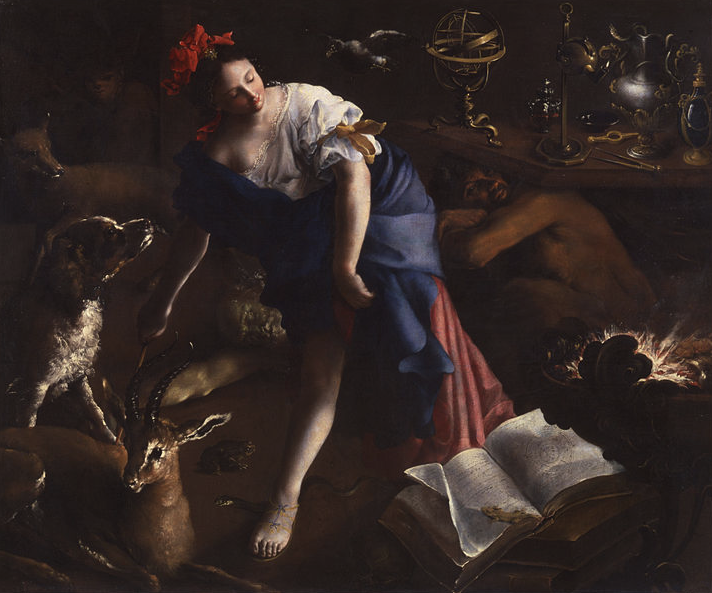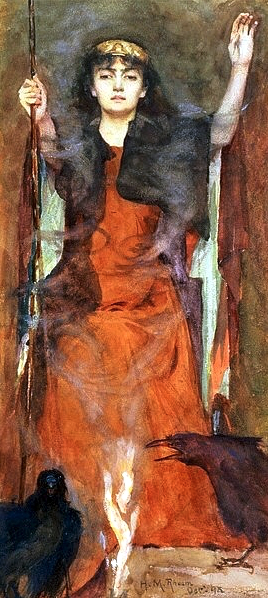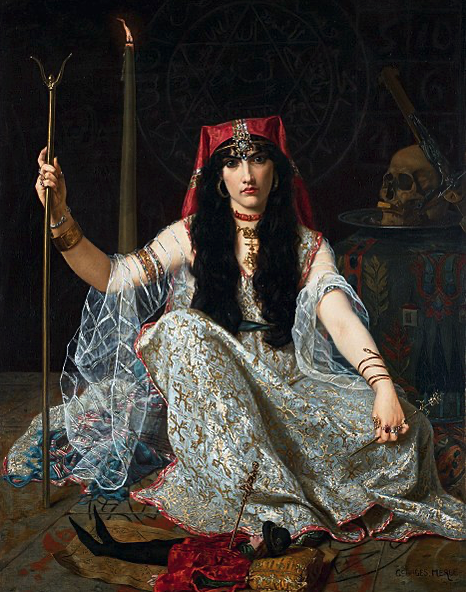
Circles are everywhere. They are a fundamental shape in geometry and are found in nature, architecture, and art.
But what is it about circles that have made them such a potent symbol in superstitions and folklore?
In many cultures, circles are seen as a protective symbol. They are often used in spells and rituals to ward off evil spirits and negative energy.
Circles are also associated with the sun, moon, and planets, which makes them a powerful symbol in astrology and witchcraft.
Read on to learn about 8 intriguing circle superstitions and lore from around the world!

1. Circle Around the Moon
In weather lore, a circle around the moon means rain is on the way.
In Legends and Superstitions of the Sea and of Sailors in All Lands and at All Times (Fletcher S. Bassett, 1885), we read:
“A circle about the moon has long been thought portentous. Wet weather will follow, say the wise, the sooner the smaller the circle.” (P. 48)
According to an English proverb: The moon with a circle brings water in her beak.
2. Ending Bad Luck and for Protection
Walking around an object or symbol three times brings an end to bad luck and brings magical protection.
For example, if a gambler was having bad luck at a game, he would stand up, walk three times around his chair clockwise, and sit back down. This action was thought to bring an end to bad luck.
For magical protection, people have long walked in a circle around a place, object, or symbol. Early Christians would walk around the church three times for protection. A practitioner in the magical arts might walk in a circle around a symbol three times for protection.

3. Rope Circle
In the Little Giant Encyclopedia: Superstitions (2008), we learn that people would pass a boat through a rope circle to take evil off the boat. (P. 423)
This is highly interesting because throughout history we see people crawling, jumping, and walking through circles made out of rope, branches, and even metal hoops to remove sickness, bad luck, and curses.
4. Keep the Dead in the Grave
According to Richard Webster in his book The Encyclopedia of Superstitions:
Weather are placed on graves to keep the dead in the ground and to prevent ghosts from escaping. He also states that wreathes of flowers also appease the spirits.

5. Circle of Mustard Seed
You probably already know that if you put a circle of salt around your bed you will be able to sleep safely. The same, however, is true of mustard seeds.
A circle of mustard seeds around your bed will not only protect you from nightmares, but any vampires looking for a bite will have to count all the seeds before snacking on your neck.

6. Cosmic Symbol
The circle in the lore of symbolism is all-encompassing. It is a symbol of the heavens and the cosmos.
In The Penguin Dictionary of Symbols (Chevalier, Gheerbrant, Buchanan-Brown, 1996) we read:
“The circle is also a symbol of time, the turning wheel. From the very earliest times the circle was used to express fullness and perfection, to embrace time itself in order to measure more accurately its passing. It was used in this way by the Babylonians, who divided it into 360 degrees, subdivided into six segments each of 60 degrees. Its name, shar, meant the universe or cosmos.” (P. 197)
7. The Circle Drawer
Early practitioners of magic were known as circle-drawers.
Barbara G. Walker (The Woman’s Dictionary of Symbols and Sacred Objects, 1988) writes:
“A sorcerer’s title dating from the first century B.C.[E.] was ‘circle-drawer.’ The circle invoked by analogy the full face of the moon, the pupil of the All-Seeing Eye, the circle of the visible horizon, and a thousand other natural forms.” (p. 4)

8. Holds in Energy
While the circle protects the person inside it from negative energies on the outside, it also holds in one’s energy.
For example, in Man, Myth & Magic (Vol. 4) we read:
“The magician and his assistants stand inside a circle to protect themselves from the spirits, demons or forces they intend to conjure up. But the circle is not only intended to keep something out but also to keep something in – the magical energy which the magicians will summon up from within themselves in the course of the ceremony.” (P. 487)

